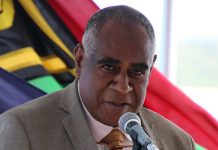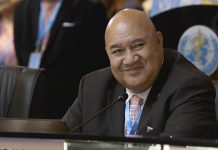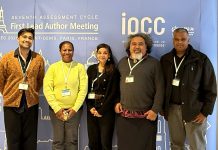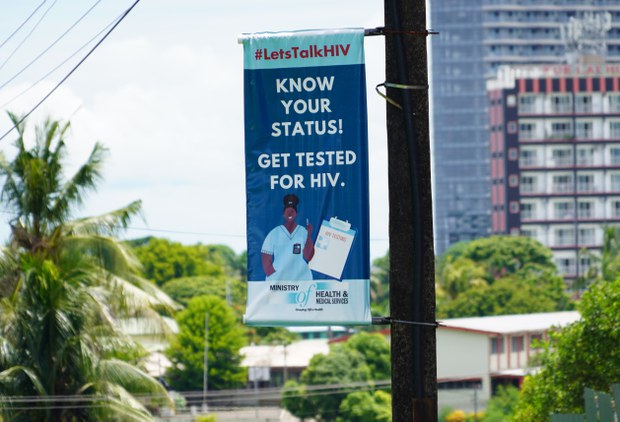The HIV outbreak in Fiji may be more severe than publicly acknowledged with estimates suggesting three times as many people are living with the virus that causes AIDS compared to official figures.
A new emergency health task-force believes the actual figure is as high as 6,100, driven by intravenous drug use, including a practice known as “blue-toothing,” where users withdraw blood after a hit and inject it into a second person.
At least 1,093 Fijians were diagnosed with HIV between January to September last year, a 9-fold increase from the 120 new infections recorded in all of 2019, according to official government figures.
Additionally, health experts and community groups say that years of underfunding for HIV programmes have severely weakened the country’s prevention and treatment systems.
Last month, the Ministry of Health released a three-year HIV Surge Strategy saying there were 2,077 Fijians living with HIV in 2023.
The new situational analysis for 2024, prepared by the National HIV Outbreak and Cluster Response Taskforce in February, and provided to BenarNews, underlines the scale of the challenge facing Fiji.
The revised estimates, based on software modelling, also show that only 1,300 Fijians are receiving antiretroviral therapy for the infection and that half of all people living with HIV are lost to follow-up, meaning they are no longer being seen in a clinical care programme.
Dr. Jason Mitchell, who was appointed to lead the national task-force, said Fiji’s HIV programme has a long way to go to catch up with reality on the ground.
“The HIV programme has unfortunately been downgraded or situated for a very low-prevalence setting,” said Mitchell, who has previously designed HIV/STI responses in Fiji, across the Pacific and in Myanmar. “But now we’ve got drug use, so the epidemic has changed significantly in the country, but the programme hasn’t.
“The whole programme needs to be reviewed and reshaped to meet the needs of the new epidemic.”
The government in January formally declared a national HIV outbreak, warning that the spread of the virus was evolving faster than health services could manage.
In addition to a three-year HIV Surge Strategy, the Ministry of Health announced a 90-day response plan that aims to improve access to testing and treatment, ensure a steady supply of antiretroviral drugs and carry out research on HIV transmission patterns.
Health experts and community advocates say the action was long overdue.
“A very simply a rule of thumb to see whether your HIV system, the prevention and treatment, is working is you look at the babies. If you get one baby born HIV positive, that means your system is gone,” said Dr Alipate Vakamocea, the President of the Fiji Medical Association.
“Last year we had 19. So, we haven’t just failed — our system has been destroyed.”
Fiji’s HIV case numbers have surged in lockstep with a growing drug problem in the South Pacific nation, which sits about 2,100km north of the New Zealand city of Auckland.
The archipelago, home to about 920,000 people, has become an important transit point in recent years for cartels from Latin America and Asia moving crystal methamphetamine and cocaine to lucrative consumer markets in Australia and New Zealand.
Tonnes of drugs are estimated to pass through Fiji each year and a significant amount has spilled into the domestic market, according to police and United Nations drugs and crime experts.
In Suva, ready-to-use syringes loaded with methamphetamine sell for as little as 10 Fijian dollars (US$4.30), at least two former users told BenarNews. The local practice of sharing blood or ‘blue-toothing’ is believed to be popular when there is a limited amount of meth available.
Transmission routes in more than half of the new HIV cases recorded in the first nine months of 2024 were from intravenous drug use, according to the government.
Rochelle, a former sex worker who began injecting methamphetamine in her mid-20s, tested positive for HIV six months ago. The 35-year-old believes she was infected through sharing syringes.
“I needed it for business, just to get through some nights,” said Rochelle, who agreed to speak on condition only her first name was used.
She tearfully recounted her story from a safe-house in Suva run by the Survival Advocacy Network, a nonprofit providing sexual health and drug support for LGBTQ+ sex workers.
Rochelle described being devastated after her diagnosis.
“I cried every night in bed and would just fall asleep in tears,” she said.
“One day, I just couldn’t contain my emotions. I went crying to church, knelt down and prayed seeking forgiveness, begging for mercy.”
Injecting drug users are thought to be the most at-risk HIV group in Fiji, but there is no surveillance to understand what the specific risk factors are and how they are driving the epidemic, Mitchell said.
“Some of the experts who have experience with running outbreaks reckon it’ll take one to two years to get this one under control,” he told BenarNews. “The reason for that is because drug users as a population are completely new for [Fiji’s] HIV programme.”
In the meantime, a large part of Fiji’s frontline HIV services will fall to just a handful of community organisations that receive little to no public funding and rely on volunteers to share information about drugs and HIV testing with residents.
In interviews, they criticised government complacency on HIV and the slow cuts to funding for the national HIV programme. They also expressed concern about conservative attitudes in parliament that were preventing the introduction of harm reduction initiatives, such as a needle exchange programme and drug rehabilitation.
“The Ministry of Health needs to stand up,” said Sesenieli Naitala, a former sex worker and project coordinator at the Survival Advocacy Network. “They have stopped people from getting tested, they discriminate, they don’t provide information and look at people differently when they’re diagnosed.
“One of the things that is killing people now is fear. They don’t have anybody beside them to encourage them and tell them they can live longer.”
Jokapeci Cati, a long-time advocate for people living with HIV and the first Fijian woman to publicly announce her positive status, said community groups needed to be empowered.
“Globally, we are moving towards peer-led intervention. I think one of the challenges here is for the Ministry of Health to trust community organisations to lead the response,” said Cati, who is the founder of the Fiji Network for Positive People (FNP+) and sits on the government-led HIV board.
“The ministry has a million things to do, so all they need to do is provide that clinical and technical component of the response and let the community deal with awareness and care.”
Fiji’s Ministry of Health did not reply to a request for comment for this story, but budget documents show funding allocated for HIV/AIDS prevention and control in Fiji has been paltry over the past five years.
In 2021-22, under former Prime Minister Frank Bainimarama, just FJD$50,000 (US$22,000) was allocated for HIV/AIDS services. That increased to FJD$200,000 (US$100,000) in 2024-25.
Grassroots organisations say the level of support is still not enough.
Since her diagnosis, Rochelle has started antiretroviral therapy and when she’s not working as a hospital orderly volunteers with the Survival Advocacy Network.
She hopes by sharing her story she will encourage other Fijians to seek help.
“I hope I can inspire others who feel unworthy or not loved because of sexual orientation and gender identity … or HIV status that there are people out there like me who listen and care,” she said.














